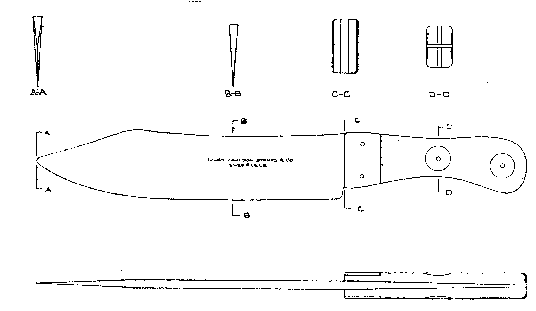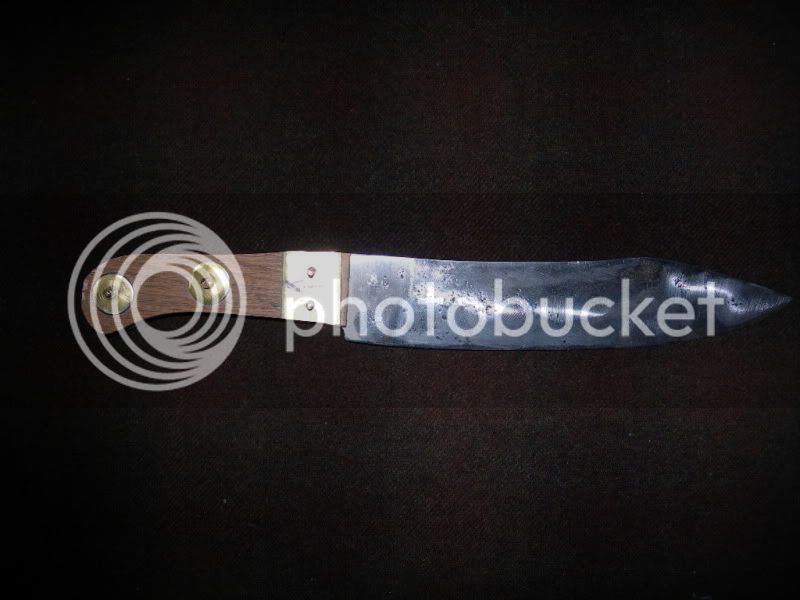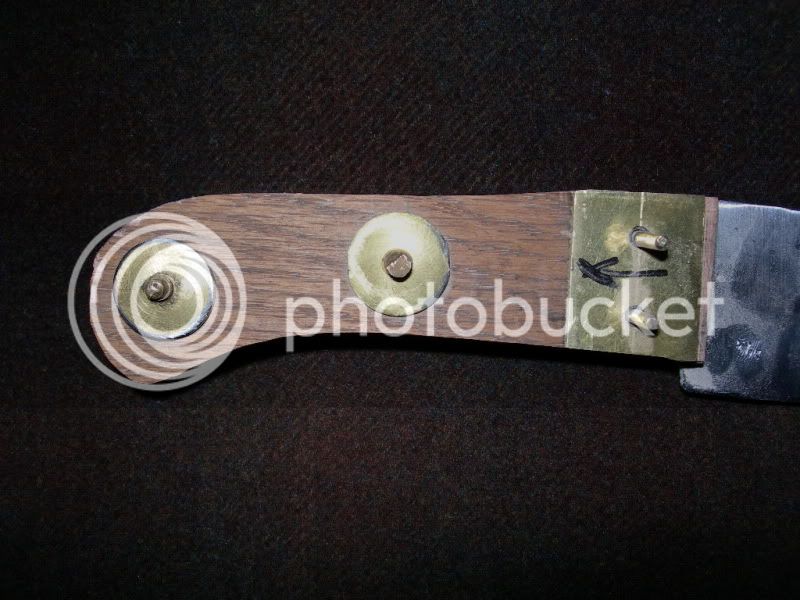Brasilikilt
45 Cal.
- Joined
- Dec 13, 2005
- Messages
- 560
- Reaction score
- 1
Ha....one of these days very soon, I need to post pics of knives I've actually finished, not these "in the works" photos 
Here is my very first attempt at a HBC Camp knife, and I was hoping for some feedback from the forum.
You guys have been immensely helpful in the past with comments and criticisms by often pointing out details which I had missed
It's easier to ask now, than have something pointed out to you after it's finished
I started out with a 2 1/4" wide 1/4" thick leaf spring...during the forging the spine gained about a 16th in thickness.
The cross section of the blade was forged into a very steep wedge in preparation for draw filing it into a flat grind.
For handles, the customer requested I use a lighter colored wood, and copper instead of brass for the rivets and bolster. I figure oak or ash would be ideal for a rough-use chopper such as this.
Here it is fresh from the forge


Here it is after I ground off the forge scale, marked the blade for a little reference and cleaned up the lines a bit with a coarse file.

And here it is in hand to show that it is a bit larger than your standard HBC knife.

The future owner's wife who commissioned this blade from me, expressed her husband's love for large impressive knives, so I took the liberty to scale this one up a bit from the original dimensions.
As always, thanks for looking, hope you enjoyed checking out my first shot at this pattern.
Iain
Iain
Here is my very first attempt at a HBC Camp knife, and I was hoping for some feedback from the forum.
You guys have been immensely helpful in the past with comments and criticisms by often pointing out details which I had missed
It's easier to ask now, than have something pointed out to you after it's finished
I started out with a 2 1/4" wide 1/4" thick leaf spring...during the forging the spine gained about a 16th in thickness.
The cross section of the blade was forged into a very steep wedge in preparation for draw filing it into a flat grind.
For handles, the customer requested I use a lighter colored wood, and copper instead of brass for the rivets and bolster. I figure oak or ash would be ideal for a rough-use chopper such as this.
Here it is fresh from the forge


Here it is after I ground off the forge scale, marked the blade for a little reference and cleaned up the lines a bit with a coarse file.

And here it is in hand to show that it is a bit larger than your standard HBC knife.

The future owner's wife who commissioned this blade from me, expressed her husband's love for large impressive knives, so I took the liberty to scale this one up a bit from the original dimensions.
As always, thanks for looking, hope you enjoyed checking out my first shot at this pattern.
Iain
Iain











